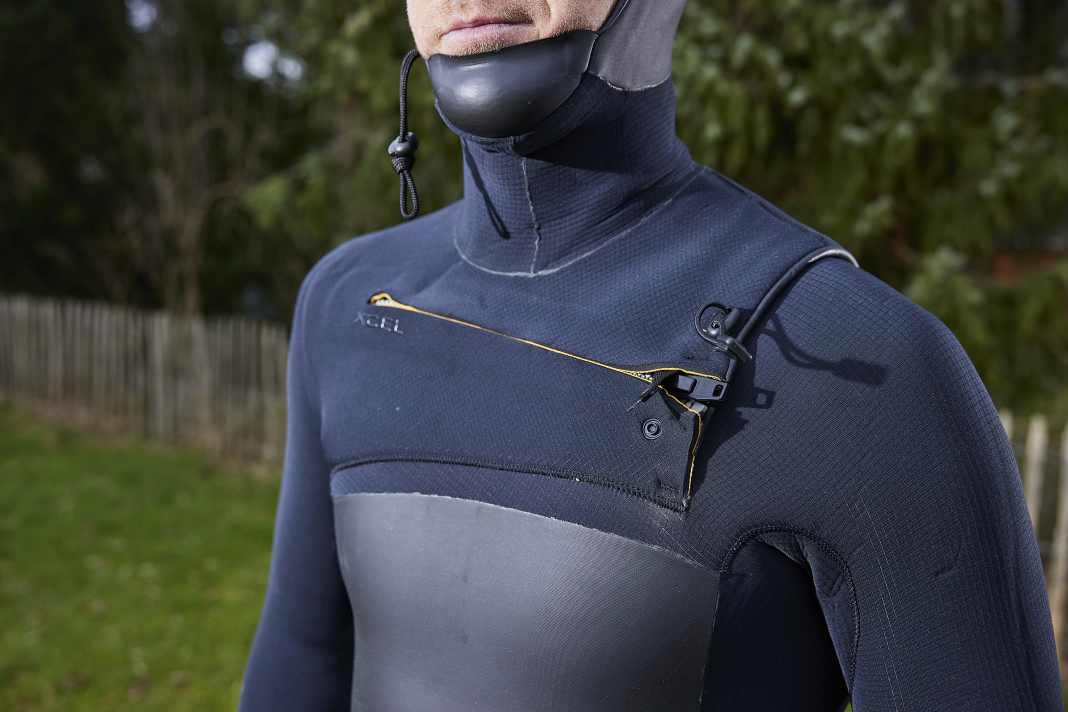





Anyone who has doubts about whether this 5/4 neoprene is really suitable for winter when looking at the thickness specification can relax. The XCEL Drylock 5/4 Hooded has neoprene that is at least as thick as most other winter neos, as the thickness specification refers to the naked neoprene, without the inner lining. We tested the winter neo last year, it is still in the 2024 range and has even become slightly cheaper.
The Drylock 5/4 Hooded is also one of the neos that require a little more effort and manoeuvrability when you first put them on, as the entry is designed to be quite small. On the other hand, the collar and the overlying bonnet overlap quite extensively. As the integrated drawstring on the chest can be tightened perfectly, water ingress is minimised. Even after heavy falls and washing, water only penetrates in homeopathic doses.
The XCEL is one of the most comfortable Neos in the group
The designers have given the XCEL Drylock 5/4 Hooded a fluffy inner lining in the torso area - internal to the brand Celliant Black called. The remaining area is also lined on the inside with a fine-pored lining, which ensures good wearing comfort. Particularly soft and comfortable smooth-skin neoprene also ensures good comfort at the wrist cuffs and chin. The winter neo from XCEL is one of the most comfortable neos in our test group. It offers a normal fit and moulds perfectly to all body contours thanks to its stretchy material.
When used on the water, the neo offers maximum freedom of movement and, above all, perfect thermal insulation. The smooth-skin material on the bonnet and torso area noticeably reduces wind chill when standing in the wind. The XCEL Drylock 5/4 Hooded establishes itself in the league of the warmest winter neos on the market because the seams seal well and the cuffs and entry area allow hardly any water to penetrate.
XCEL Drylock 5/4 Hooded - the bottom line:
The Drylock 5/4 Hooded is expensive, but combines high-quality features and the best thermal insulation with plenty of freedom of movement. It therefore offers the best conditions for "winterising" on the water. We would therefore place the comfort range at between zero and ten degrees. The fact that you have to work a little harder to put it on and take it off is something you can get over.
Thermal insulation; Features
Rating:
Technical data:
- Test model: XCEL Drylock 5/4 Hooded (size LT)
- Thickness: 5/4 mm
- Available sizes: XS/S/ST/MS/M/MT/LS/L/LT/XLS/XL/XLT/XXL/XXXL
- Price: 557 Euro RRP >> available here
